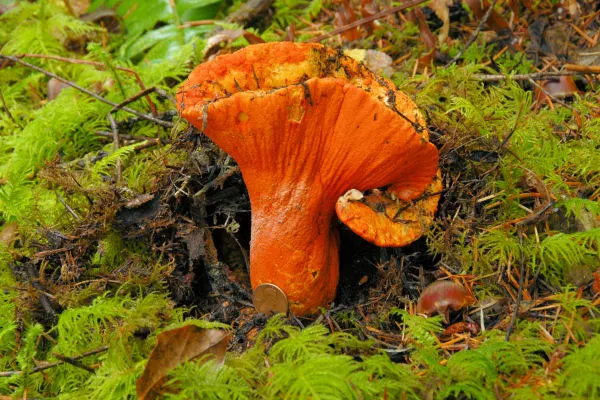The weirdest mushroom in BC? Edible Lobster Mushrooms!

Lobster mushrooms in BC are one of my favourite edibles. They do taste mildly like seafood and have a great, firm texture. They also colour your dishes red; remember you eat with your eyes first!
The cool thing about Lobsters (Hypomyces lactifluorum) are that they parasitize russula family mushrooms (with gills) and actually transform them into lobster mushrooms (without gills). They’re really easy to identify for beginner mushroomers.
Where do I look?
- Anywhere there are russula’s around, especially russula brevipes (short stemmed, white russula). In other words, coniferous forests, growing on the ground.
When do I look?
- Aug-late Oct in BC
Key Features?
- No gills – firm pores instead
- Bright Red/Orange
- No distinct stem or cap, blobby shaped
- Old ones smell like seafood (young ones are more mild)
Know these look alikes first…
- There are other Hypomyces out there that don’t look anything like a lobster mushroom
- If you ever find a yellow/green lobster mushroom… don’t eat it –Hypomyces luteovirens
How to cook them?
- Pick them when they are firm and fresh. If they smell too fishy they’re no good.
- Slice them up and fry them with butter and thyme… stuff some ravioli with them and serve with a white wine cream sauce… YUM!
- Apparently, they don’t freeze well (I haven’t tried)
Factoid
- One friend of mine had stomach cramps from eating a lobster mushroom. Probably allergy related as these are commercially available (wild ones). It’s a good idea to do a cook test with a small piece of any wild mushroom that you are 100% sure is edible. Eat it, wait a few days and then make sure you don’t get stomach upsets.
Please use caution when hunting for edible mushrooms. This is just a rough guide which is no substitute for going out with an experienced wildcrafter. Most mushrooms aren’t deadly poisonous, but it’s no fun getting sick and not worth the risk! Come with us on a mushroom tour to start you off on the right foot.
David Arora’s – “All that the rain promises and more” is a great handbook to give you more information on specific Pacific Northwest mushrooms.

